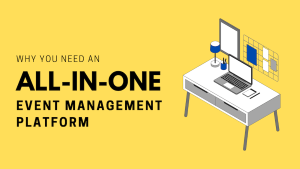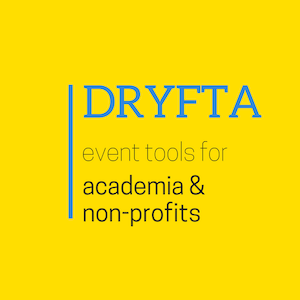
If you're organizing a conference, you know it's not easy to keep people interested. A lot of things come into play during the event: the presentation format, the speakers, and much more. But there is one thing that affects everything else in a negative way: attendees who leave early after realizing they don't like what they see (or hear) at first sight. If you want to keep your attendees all day long, here are some tips that can help you achieve this goal:
Introduce your speaker 20 minutes before the session begins
You can even introduce the speaker and explain what they will be talking about. This is also a good time to ask the audience to take a break and return in 20 minutes, as this can help you keep your guests engaged until the end of the session.
Introduce a speaker with an introduction video or slide deck that explains who they are, what their background is and what they'll be talking about during their speech. This will give them enough information so that when they return from their break, they won't feel lost or confused by what's happening on stage – instead, they'll feel prepared to listen carefully and participate actively in the discussion afterward.
Start the presentation with a question for the audience
Ask an open-ended question
The first step to keeping your attendees interested is to start the presentation with a question for the audience. This can be done in one of two ways: by asking attendees to answer a question themselves, or by asking them to participate in some way (i.e., raise their hands). Either method will get them engaged and thinking about what you're about to say.
Ask a question that requires audience participation
You can also ask a question that requires audience participation—in fact, it's best if you do! By getting your participants involved from the very beginning, they'll feel more connected and invested in what happens next because they'll have contributed something of themselves into the discussion. Plus, it's fun!
Ask your speaker to show pictures of themselves
Ask your speaker to show pictures of themselves and their cat or dog.
You can ask the audience to do the same.
Don't forget about your pet—if you have one, show us pictures of yourself with them! And if you don't have a pet, go ahead and share photos of yourself in your bathing suit along with those from any family members who would be willing to submit them (we know how protective some parents are about exposing their kids publicly).
Ask your speaker to tell something about his/her personal life
If you want to keep your attendees until the end of the conference, try asking your speaker to tell something about his/her personal life, such as their hobbies or favorite sports. It will break the ice with them and make them more relaxed. This will also give you a better understanding of who they are as individuals and what inspires them.
Have your speakers use black or white color fonts whenever possible
The most important thing when it comes to the design of a presentation is that your audience can actually read it. This means using black or white fonts whenever possible, and avoiding colors that are hard on the eyes (purple, red and orange). Black and white colors are easier on your audience's eyes because they don't strain them as much as other colors do.
You should also use a sans serif font style for titles instead of something more decorative like Arial or Times New Roman. This will give you an air of professionalism that many conference goers appreciate. And finally, make sure that you save your presentations in PDF format so attendees can print them easily if needed!
Create a Twitter hashtag for your event, and encourage Tweeting during the sessions
Even if your attendees are busy tweeting, they'll probably still be paying attention to the speaker. They'll still be engaging with their fellow attendees and the people who run the event. The hashtag is a great way to encourage Twittering during sessions and keep everyone engaged with one another.
Hashtags can also be used to create conversations around specific topics during sessions. Last year at our conference, we had a hashtag for each session (like #NAP15). This helped us collect all tweets from that session into one place so we could review them later on for feedback or other analysis purposes.
Offer a time for Question-and-Answer after every session
Allowing time for questions from the audience is important. Sometimes, the speaker may not be able to answer all questions in their talk. If you want your audience to feel like they can talk to speakers at any time, make sure there's a specific block of time dedicated to Q&A after every session.
Use a moderator when possible (and appropriate). Using a moderator will help keep things moving smoothly if you have large audiences or people who ask many questions. If you don't have a moderator, try asking attendees if they'll raise their hand if they have a question. This way you can quickly get through all the hands in the air and get back on track with your agenda!
Make sure your speakers have enough time to answer all questions! It's crucial for them to feel confident about answering questions because it helps build trust in their expertise and knowledge base with listeners who may not know much about the topic yet—so please be mindful of this when planning out your conference schedule!
Takeaways
If you want to know how to keep your attendees at the end of a conference, you’re in the right place. The tips and tricks we’ve outlined above will help ensure your audience stays engaged with your event and leaves feeling like they’ve got something valuable out of it. Don't let the end of a conference come too soon for your attendees. Keep them interested by using some of these handy tricks!





